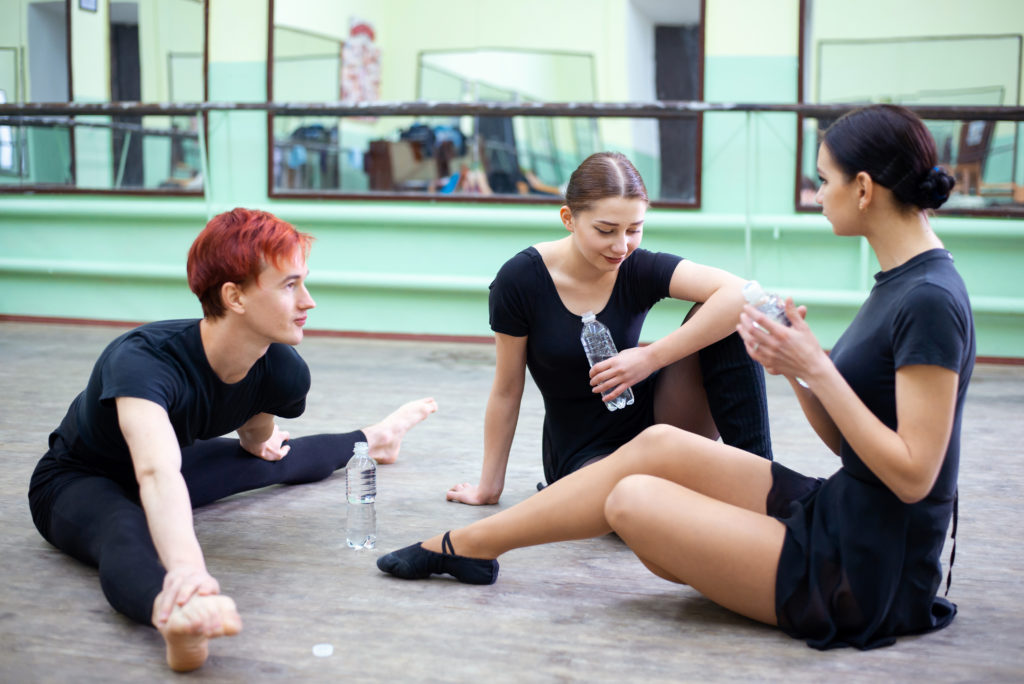Besides Being Bendy, Hypermobile Dancers May Experience These Surprising Symptoms
As dancers, it’s easy to find ourselves envious of others with effortless extensions and aesthetically pleasing lines. But what you may not know is that sometimes these desirable characteristics are associated with physical problems, frequently downplayed by health-care professionals and performers alike. Sometimes, the medical provider has limited understanding of hypermobility and mistakenly expresses doubt that the dancer experiences “real” symptoms. However, especially with early intervention, many of these symptoms can be improved, often without a prescription.
But let’s back up a bit. What does it mean to be hypermobile, and why does it matter?
First off, hypermobility and flexibility aren’t one and the same. Joint hypermobility describes a joint with greater than average range of motion—often due to looseness in the ligaments that connect bone to bone. A hypermobile joint may also be unstable (meaning that it is difficult to maintain proper joint alignment), but not always. A hypermobile dancer may experience excessive range of motion in one, several or many joints. Nonmedical terms like “bendy” and “double-jointed” are often used, as well. Meanwhile, flexibility involves muscles and the nervous system. It is possible to have either flexibility or hypermobility without the other.
Understanding why you are hypermobile is crucial, since there can be many causes. There are hundreds of genetic conditions that are associated with joint hypermobility, including Ehlers-Danlos syndromes. But there are also other influencers, such as injury, bone shape, muscle mass and nutrition. Symptoms in different bodily systems can be associated with hypermobility. Five of the most common, but often underappreciated, symptoms are listed below, along with starting points for how to cope with them. If you’re experiencing any of these, you should first seek care from your health-care team to rule out other possible contributing causes, such as anemia. Working with professionals who are knowledgeable about joint hypermobility and dance is ideal.
Poor Proprioception
Knowing where your body is in space without looking, or proprioception, is key to your safety in the studio and onstage. Good proprioception helps dancers optimize their movement patterns and reduces the risk of injuries, whether from working in a hypermobile range, making missteps or colliding with other dancers. Hypermobile dancers may paradoxically be at increased risk of poor proprioception while experiencing heightened sensitivity to sensory stimuli, like lights, sounds and textures. This can cause challenges both in class—for example, if you’re distracted by a scratchy tag in your leotard—and during performances.

Try this: Pilates mat and reformer classes may help you improve your proprioception, joint alignment and joint stabilization. If you can, book a one-on-one session, so the instructor can assess your individual needs and movement patterns.
Dizziness
Studies demonstrate substantially higher rates of dysautonomia—dysfunction of the autonomic nervous system (which deals with automatic functions, like heart rate, blood pressure, digestion and temperature regulation)—in those with joint hypermobility. Dysautonomia can occur transiently with puberty or be more prolonged following an infection, such as COVID-19. Dizziness (especially when transitioning to standing), fainting or almost fainting are frequent signs of dysautonomia. Inadequate blood flow to the brain can cause dizziness and may be due to inadequate blood volume or abnormalities in the heart rate or blood pressure.

Try this: Dizziness may improve with careful attention to hydration. Try consuming fluids more frequently during the day, as well as adding electrolytes. Use trial and error to find the sports drink or electrolyte packet that works best for you. Don’t wait to hydrate until you feel thirsty as thirst may be a late indicator of dehydration. Caffeine and alcohol intake should be minimized as they can have a dehydrating effect. Avoid overheating by using cool towels, portable fans and layered dancewear, and take breaks as needed.
Anxiety
Just because a dancer has anxiety does not mean they have hypermobility and vice versa. These two conditions are strongly linked, however, and a number of factors appear to be involved. Scientific evidence suggests that the amygdala (the fear center of the brain) is larger in those with hypermobility. Dysautonomia can contribute to anxiety via activation of the “fight, flight or freeze” response. Upon hearing this link with hypermobility, many dancers feel a sense of relief and lessening of their anxiety, due to the self-blame that often accompanies it.

Try this: Anxiety is future-focused, so practicing mindfulness can ease anxiety by bringing you back into the present moment. Prioritizing self-compassion, tenderness, kindness and patience regarding your own perceived flaws can be helpful, especially if you’re a ballet dancer who is used to striving towards perfectionistic goals. Working with a mental-health professional who understands dance can be very beneficial.
Injury
Hypermobility in itself is not a disorder and may be completely asymptomatic. However, if you’re a hypermobile ballet dancer who experiences frequent injury, especially with prolonged healing, you should see your doctor. You may have an underlying connective-tissue disorder (such as Ehlers-Danlos Syndrome) or a hypermobility spectrum disorder, an umbrella term for a group of conditions related to joint hypermobility.

Try this: Though injuries are not always preventable, careful attention to technique and avoiding fatigue, by getting adequate sleep, lowers injury risk. Nutrition also impacts injury risk and healing, so working with a registered dietitian nutritionist can ensure that you are meeting your body’s nutrient and hydration needs. When injured, avoid the temptation to jump back into dance prematurely. Instead, prioritize full recovery even if it requires longer “relative” rest than you desire. Relative rest allows you to rest the injured body part while moving noninjured parts. This strategy may lessen the risk of developing persistent pain.
Pain
Every ballet dancer experiences aches and pains from time to time, but some develop pain that lasts for more than three months. Chronic pain commonly co-occurs in hypermobility disorders and has the best outcome when addressed as early as possible. If you’re hypermobile with chronic pain, you may develop kinesiophobia—the fear of movement—if you begin to become injured easily.

Try this: For optimal healing, work with a dance-medicine physical therapist as soon as possible following acute injury. Your physical therapist should also be a critical member of your health-care team prior to injury or the onset of chronic pain.
As a bendy dancer, you may have some significant aesthetic advantages over your peers, but you need to pay careful attention to your body to optimize its performance and improve the longevity of your career. Proactively working with a dance-medicine–trained health-care team and communicating with your instructors or artistic staff are essential to your success.






